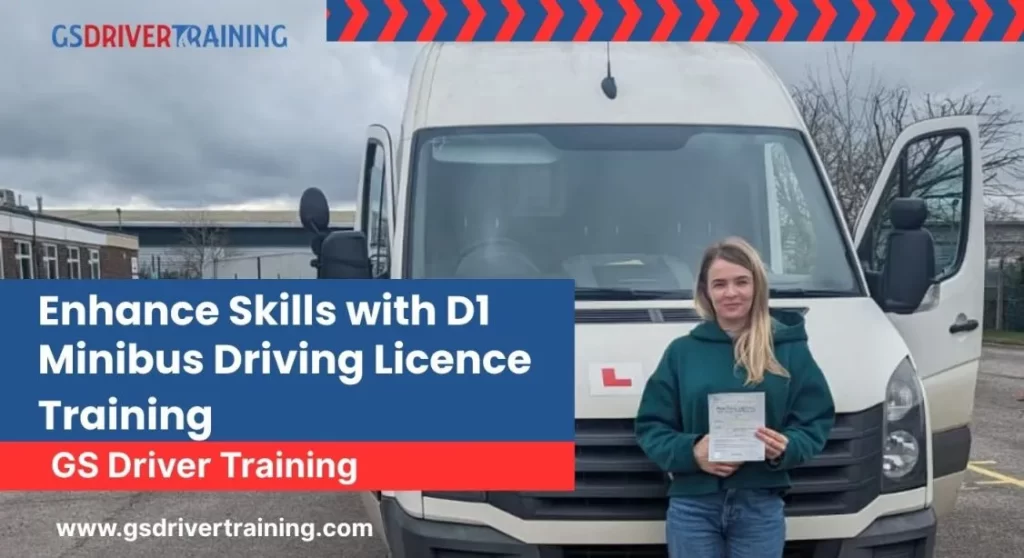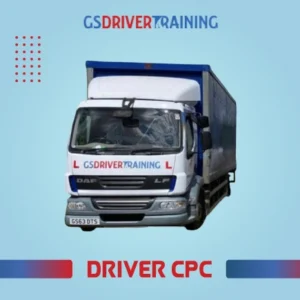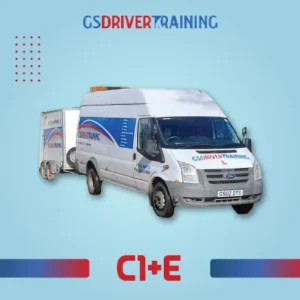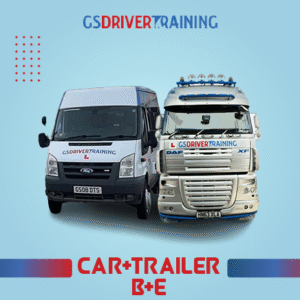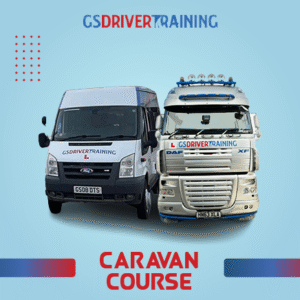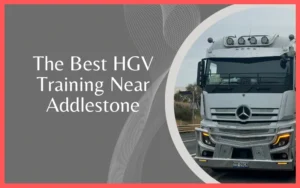Enhance Skills with D1 Driving Licence Training Close By
Securing a D1 driving licence training programme establishes the entitlement to operate minibuses with up to 16 passenger seats, making it essential for community transport, charities, schools and professional services. This guide delivers immediate clarity on eligibility prerequisites, theory and practical assessments, cost breakdowns, Driver CPC requirements and advanced D1 + E towing options. You will learn exactly what age and licence criteria apply, how to book and pass both theory and hazard perception tests, what manoeuvres feature in the practical driving examination and how to budget for all fees—plus legal exemptions and professional qualification essentials. Within these sections, we also outline how expert-led training providers enhance your readiness with modern minibuses, flexible scheduling and proven high pass rates. By the end, you’ll have a complete roadmap for achieving your minibus licence entitlement efficiently and confidently.
What Are the D1 Licence Requirements for Minibus Driving?
A D1 licence requirement defines the entitlement to drive a passenger-carrying minibus up to 8 metres long and 16 seats, ensuring safe operation under UK law. Meeting eligibility and documentation standards fast-tracks your provisional entitlement, while professional training enhances your success.
What Is a D1 Licence and Who Needs It?
A D1 licence is a specialised driving entitlement that authorises operation of minibuses not exceeding 8 metres with up to 16 passengers. It suits community groups, schools, charities and small commercial operators requiring safe transport without stepping into full coach (Category D) territory.
This entitlement aligns with DVLA regulations and DVSA test standards. Expert-led training providers integrate demonstrations of loading procedures, passenger safety briefings and route planning into their courses, offering candidates hands-on experience before test day.
Assessing Public Minibus Taxi Driving Behaviour and Safety
In most developing countries, a significant percentage of households rely on public transport, specifically informal minibus taxis. In South Africa, this mode of transport is more regularly involved in road traffic accidents compared to other modes. However, very few studies have focused on analyzing driving in this transportation mode from the perception of the commuter. In this study, the analysis is carried out using qualitative (questionnaires) and quantitative (speed and acceleration) data with the aim of finding factors that characterize public transportation drivers, specifically understanding how minibus taxi drivers differ from other drivers and how the regulatory environment influences their on-road behavior. The personality and skills of the drivers are shown to be the two main factors to analyze. It is shown that minibus taxi drivers perform lower than ride-hailing drivers. In addition, their driving is more aggressive in a controlled environment, while it is more reckless in an uncontrolled environment. Cultural, training, and technology-oriented actions are suggested to improve the on-road driving of the minibus taxi in the chosen study area.
Qualitative and quantitative assessment of public minibus taxi driving, A Kibangou, 2025
What Are the Age and Existing Licence Criteria?
To apply for a provisional D1 licence, you must be at least 21 years old and hold a full Category B (car) licence for at least two years. This age threshold ensures sufficient driving experience and maturity for handling larger vehicles:
- Minimum age: 21 years
- Required licence: Full Category B held for 24 months
- Driver history: No recent major endorsements or disqualifications
Successful candidates often benefit from refresher courses that condition them to vehicle dimensions and in-traffic decision making.
How Do Medical Standards Affect Your D1 Licence Application?
A Group 2 medical examination verifies fitness to drive a minibus under UK legislation. An approved GP completes a D4 medical form, certifying vision standards, cardiovascular health and neurological stability:
- Vision: 6/12 eyesight minimum, corrected if necessary
- Cardiovascular: No uncontrolled hypertension or recent cardiovascular events
- Neurological: No uncontrolled epilepsy or loss of consciousness
These medical checks uphold passenger safety and vehicle control. Training centres often assist with scheduling medical assessments to streamline your application.
How Do You Apply for a Provisional D1 Licence?
Completing a D2 application form initiates your provisional D1 entitlement via DVLA processing. The D2 form collects personal details, licence history and medical declarations. Once submitted alongside the D4 medical report and the application fee, provisional entitlement typically arrives within three weeks.
This provisional licence allows entry to theory and practical tests. Many providers bundle form guidance with lessons, reducing errors and administrative delays.
What Are Grandfather Rights and How Do They Affect You?
Grandfather rights exempt certain existing drivers from needing full D1 training if they held D1 entitlement before October 1997. This rule change removed automatic minibus entitlement for new Category B licence holders, so drivers licensed before that date retain a free D1 entitlement.
Understanding grandfather rights avoids unnecessary training costs. Training providers verify entitlement on licence records and advise only those truly requiring full training to proceed.
How to Prepare for the D1 Theory Test: Minibus Driving Knowledge and Hazard Perception
The D1 Theory Test combines multiple-choice questions and hazard perception clips to assess knowledge of minibus-specific regulations and road safety. Focused preparation ensures you grasp legal requirements, passenger safety and hazard anticipation.
What Topics Are Covered in the D1 Theory Test?
The D1 theory component evaluates five key domains relevant to minibus operation:
How Can You Practice for the D1 Theory Test?
Structured practice enhances recall and timing. Leading approaches include:
- Completing official DVSA-style practice papers under timed conditions.
- Engaging with interactive hazard perception simulations to sharpen hazard recognition.
- Reviewing training provider-supplied mini-lectures on passenger-carrying vehicle rules.
Consistent practice of these elements builds confidence on test day and reduces the chance of unexpected question formats.
How Do You Book and Take the D1 Theory Test?
Booking the theory test involves selecting a convenient DVSA test centre online and paying the test fee. On test day, arrive early with your provisional D1 photocard and confirmation email. Test procedures include verifying identity, completing multiple-choice questions electronically and viewing 14 hazard perception clips.
Staying calm and managing time effectively maximises your score in both sections. Many candidates report that pre-test familiarisation drives up pass rates significantly.
What to Expect in the D1 Practical Driving Test for Minibus Licence?
The D1 practical test demonstrates your competence in vehicle safety checks, off-road manoeuvres and on-road driving scenarios, ensuring you can transport passengers securely.
What Vehicle Safety Checks Are Required Before the Test?
You begin by identifying and explaining key minibus safety checks, including:
- Tyre condition and pressure checks
- Brake lights and indicators functionality
- Fluid levels (engine oil, brake fluid, coolant)
- Emergency equipment (warning triangle, first-aid kit)
Providing clear, step-by-step explanations of each check demonstrates your pre-drive diligence and mechanical awareness.
Which Maneuvers Are Tested in the D1 Practical Driving Test?
The practical test includes three off-road exercises followed by on-road assessment. Off-road manoeuvres cover:
- Reverse parking into a bay
- Controlled reverse around a corner
- Manoeuvring in restricted spaces
On-road components focus on junction handling, dual carriageway driving and passenger-carrying etiquette. Effective rehearsal of these manoeuvres under instructor supervision enhances precision and control.
What Are Common Faults and How to Avoid Them?
Minibus tests record minor and serious faults. Common errors include:
- Failing to observe blind spots
- Improper steering during reversing exercises
- Speed misjudgement on dual carriageways
- Incomplete safety commentary
Avoid faults by practising mirror use, slow controlled steering and verbalising safety checks as part of your driving routine. Feedback from expert instructors refines these habits.
How Long Does the D1 Practical Test Take?
The typical D1 practical test lasts approximately 90 minutes, divided into:
- 10 minutes of safety questions and off-road exercises
- 80 minutes of on-road driving assessment
Understanding this structure helps manage nerves and energy levels throughout the test.
How Much Does D1 Licence Training and Testing Cost?
What Are the Medical and Application Fees?
Obtaining medical clearance and provisional entitlement involves:
- D4 medical examination fee: £50–£130 average
- D2 application form fee: £50 processing
These initial expenses secure your legal right to take both theory and practical tests.
How Much Do Theory and Practical Tests Cost?
DVSA charges for tests are:
- Theory test: £28
- Practical driving test: £115 weekday, £141 weekend
Knowing these figures allows effective test-booking and retest planning.
What Are the Training Course Prices and Package Options?
These options cater to differing experience levels and scheduling needs, with premium packages often yielding the highest pass rates.
How Much Does Driver CPC Add to the Cost?
Driver CPC adds:
- Initial CPC qualification (modules 2 & 4): £78–£80
- Periodic 35 hours training renewal every five years: £350–£450
Including CPC in your training package can simplify scheduling and reduce overall expenditure.
What Is Driver CPC and Why Is It Important for Minibus Drivers?
Driver CPC verifies professional competence for minibus drivers operating vehicles for hire or reward, promoting road safety and consistent standards.
Who Needs a Driver CPC for D1 Licence Driving?
Any driver using a minibus for commercial purposes—such as school transport, patient transfer or community hire—requires Driver CPC. Non-commercial volunteers or personal, non-remunerated usage remain exempt.
What Are the Initial and Periodic CPC Training Requirements?
Initial CPC comprises:
- Module 2 (Case Studies): Written exam assessing practical problem-solving scenarios.
- Module 4 (Practical Test): On-road demonstration of safe, professional driving.
Periodic CPC mandates 35 hours of approved training every five years, ensuring skills remain current and regulations understood.
Are There Any Exemptions from Driver CPC?
Exemptions apply to:
- Non-commercial volunteer drivers under Section 19 permits
- Drivers under continuous vocational training schemes
- Specific short-term hire arrangements
Verifying exemption status prevents unnecessary training expenses.
Can You Drive a Minibus Without a D1 Licence? Legal Exemptions and Conditions
What Are Grandfather Rights and Section 19 Permits?
Grandfather rights allow pre-1997 Category B licence holders to retain D1 entitlement automatically. Section 19 permits enable non-commercial community groups to appoint volunteer drivers without a D1 licence, provided no payment beyond expenses is involved.
When Is Driving Without a D1 Licence Allowed?
Volunteer drivers on non-commercial routes can drive minibuses without D1 entitlement if:
- The service is free to passengers
- No hire or reward payment is collected
- A Section 19 permit is held by the operating organisation
These rules support charity transport without imposing full training on volunteers.
What Are the Weight and Passenger Limits Without a D1 Licence?
Under exemptions, minibuses must not exceed:
- Maximum authorised mass: 3,500 kg
- Passenger seats: 16 (including driver)
Remaining within these limits avoids breaching vehicle category rules and ensures safety for all occupants.
What Are the Benefits of D1+E Licence Training for Minibus Drivers?
What Is a D1+E Licence and Who Should Get It?
A D1 + E licence combines minibus driving entitlement with a trailer-towing qualification. Ideal candidates include holiday tour operators, sports clubs transporting gear and mobile service providers requiring additional cargo capacity.
This extension ensures legal compliance and safe handling of coupled vehicles.
How Does D1+E Training Differ from Standard D1 Training?
D1 + E instruction incorporates:
- Trailer coupling and uncoupling procedures
- Manoeuvres with trailer stability considerations
- Reversing combined vehicles in restricted spaces
These additional modules deepen understanding of weight distribution and articulation control.
What Are the Advantages of Holding a D1+E Licence?
Holding D1 + E entitlement delivers:
- Increased service offerings by transporting equipment safely
- Competitive edge for commercial minibus operators
- Enhanced trailer handling skills transferable to larger PCV categories
This licence combination promotes efficiency, broadening your professional capabilities.
Minibus driving training is a strategic investment in mobility, safety and professional competence. Whether you aim to support community transport, advance commercial operations or tow equipment efficiently, following this guide ensures you meet all legal requirements, pass theory and practical tests confidently and manage costs effectively. By partnering with expert-led training providers offering comprehensive packages and flexible schedules, you enhance readiness and achieve entitlements faster—paving the way for reliable, passenger-safe minibus operations.
Frequently Asked Questions
Q. What is the process for renewing a D1 licence?
Ans: Renewing a D1 licence typically involves submitting a new D2 application form to the DVLA, along with a completed D4 medical form. You must also provide a recent photograph and pay the applicable fee. If your medical condition has changed since your last application, you may need to undergo a new medical examination. It’s advisable to start this process well in advance of your current licence expiry to avoid any gaps in your entitlement to drive a minibus.
Q. What additional training is recommended for new D1 licence holders?
Ans: New D1 licence holders are often encouraged to undertake additional training, such as passenger safety courses and advanced driving techniques. These programs can enhance skills in managing larger vehicles and dealing with various passenger scenarios. Refresher courses focusing on hazard perception and emergency procedures are also beneficial. Many training providers offer tailored courses that help new drivers build confidence and competence in real-world driving situations.
Q. What should you do if you fail the D1 theory or practical test?
Ans: If you fail the D1 theory or practical test, you can retake the test after a waiting period. For the theory test, you can book a retake as soon as you feel prepared, while the practical test may require a minimum waiting time of 10 days. It’s advisable to review the areas where you struggled and consider additional training or practice sessions to improve your skills before attempting the test again.
Q. Are there any age exemptions for the D1 licence requirements?
Ans: Generally, the minimum age to apply for a D1 licence is 21 years. However, there are exemptions for certain individuals, such as those who held a D1 entitlement before the age limit was established or those driving under specific community transport schemes. It’s essential to verify your eligibility and any applicable exemptions with the DVLA or a qualified training provider to ensure compliance with current regulations.
Q. What are the implications of driving a minibus without a D1 licence?
Ans: Driving a minibus without a D1 licence can lead to serious legal consequences, including fines, points on your driving record, and potential disqualification from driving. Additionally, if involved in an accident, your insurance may be voided, leaving you liable for damages. It’s crucial to ensure you have the appropriate licence and training before operating a minibus to protect yourself and your passengers legally and financially.
Q.How can you find a reputable D1 training provider?
Ans: Finding a reputable D1 training provider involves researching local driving schools that specialize in minibus training. Look for providers with positive reviews, high pass rates, and experienced instructors. Recommendations from other drivers or community organizations can also be valuable. Additionally, check if the provider is accredited by relevant authorities, as this can indicate a commitment to quality training and adherence to industry standards.

